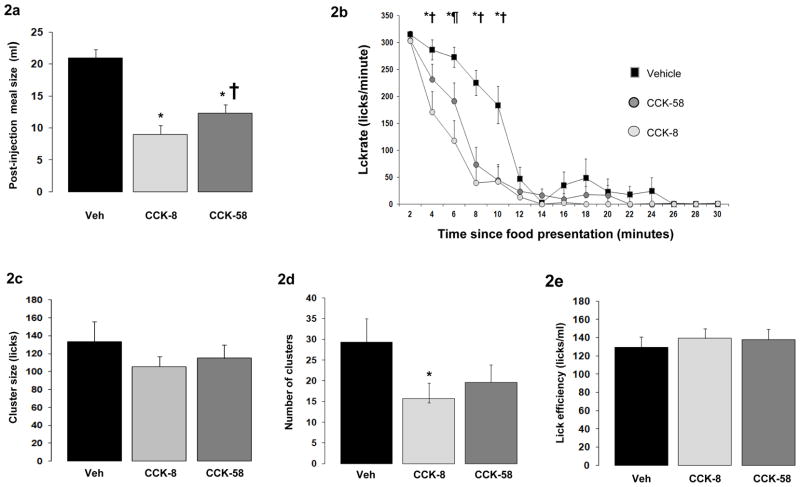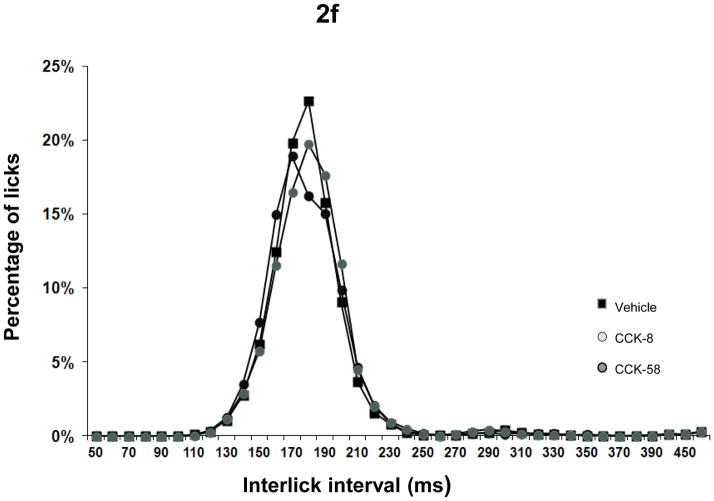Figures 2a – 2f.
Results from study 2, showing food intake and meal microstructure in rats (N=10) during a 30-minute presentation of sweetened condensed milk following ip injections of anorexic doses (0.9 nmole/kg) of CCK-58 and CCK-8, or vehicle. Licking was measured by electronic lickometers with millisecond resolution. Significant between-condition effects after Bonferroni correction (P < 0.017) are indicated by: * CCK-8 vs vehicle, † CCK-58 vs vehicle, ¶ CCK-58 vs CCK-8.
(2a) Thirty minute intake (mean ± sem in ml) of sweetened condensed milk following administration of CCK-58, CCK-8 or vehicle. Both CCK forms reduced food intake significantly; (2b) Lick rates (mean ± sem) in consecutive 2-minute intervals during the 30 minute test-food presentation period. The habituated rats all ate only one large meal starting immediately after food presentation in all conditions. Departing from an initial lick rate that equaled that of the vehicle condition, injection of both forms of CCK led to faster deceleration of lick rate. Importantly, no abrupt or irregular lick patterns occurred after administration of CCK-58; (2c) Mean ± sem of lick-cluster size. Lick cluster was defined as a uninterrupted train of licks with < 500 msec between licks. No differences were found between CCK forms and vehicle; (2d) Total number of lick clusters (mean ± sem) during 30 minute liquid presentation. The number of lick clusters, (but not of lick cluster size) was analogous to total intake in the three conditions, suggesting a similar satiation process after CCK-58, CCK-8 and vehicle; (2e) Lick efficiency (i.e. the number of licks per ml of food ingested) following ip injections of CCK-58, CCK-8 and vehicle. No differences were found between vehicle and CCK conditions, indicating unimpeded motor behavior after both forms of CCK; (2f) Distribution of interlick interval (ILI) distribution in 10-ms bins during the 30-minute presentation of liquid test food. Data are expressed as percentage of total number of licks. The similar ILI distribution after both CCK forms and vehicle administration further confirms that meal size reduction did not result from malaise or motor impediments.


